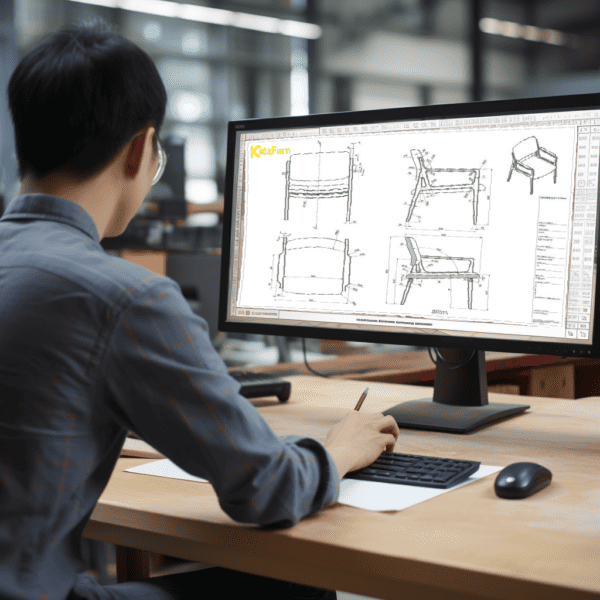Imagine a preschool classroom where curiosity crackles like static electricity, tiny hands explore tactile wonders, and laughter ricochets off walls painted with possibility. Crafting this vibrant ecosystem doesn’t demand a gold-plated budget—just strategic ingenuity. The secret? Marry pedagogical potential with frugal flair, transforming overlooked corners into hubs of discovery.
Every dollar saved on preschool classroom furniture is a victory, but compromising on engagement? Unthinkable. Think beyond cookie-cutter solutions: repurpose thrifted bookshelves into sensory stations, swap pricey rugs for puzzle-piece foam mats, or let nature donate loose parts for play. Budget constraints aren’t creativity’s nemesis—they’re its muse.
Ready to engineer a space where learning and frugality waltz? Let’s dismantle the myth that magic costs money. Your dream classroom awaits—no auction bids required.
I. Assess Your Classroom Needs
1. Understand Your Budget Constraints
Setting a realistic budget is the cornerstone of a budget-friendly classroom setup. Begin by listing the absolute essentials like child-sized chairs, adjustable tables, and multipurpose storage solutions. Once you’ve covered the must-haves, allocate any remaining funds for extras like vibrant classroom decorations or sensory play stations.
Prioritize durable furniture materials that can withstand daily use, ensuring a cost-effective classroom design in the long run. By focusing on quality over quantity, you’ll avoid wasting money on items that don’t last.
2. Identify Core Functional Areas
Organizing your classroom into functional learning zones saves money and optimizes space. Consider these key areas:
- Reading Corners: A cozy nook with cushions or bean bags where children can enjoy books.
- Sensory Play Areas: Simple setups with affordable sensory bins or water tables.
- Creative Stations: Tables with art supplies, building blocks, or crafting materials for hands-on learning.
Mapping out these zones will prevent unnecessary purchases and ensure every piece of furniture has a defined purpose.
II. Choose Affordable Preschool Classroom Furniture
1. Focus on Child-Sized Chairs and Adjustable Tables
When selecting furniture, prioritize child-sized chairs and adjustable tables to promote both safety and ergonomic support. Properly sized furniture ensures children can sit and work comfortably, fostering better posture and focus during activities.
Look for affordable preschool furniture options from local suppliers or online marketplaces. Many offer sturdy, safety-compliant furniture that fits a variety of needs without overspending. Adjustable tables are especially versatile, accommodating various activities and saving money over time.
2. Explore Second-Hand Classroom Furniture
Second-hand classroom furniture can be a goldmine for budget-conscious teachers. Check local thrift stores, community groups, and online platforms like Facebook Marketplace for quality finds. Look for multipurpose items like modular furniture for kids, which can adapt to different classroom layouts.
When shopping second-hand, inspect items carefully for wear and tear. Focus on durable furniture materials and easy-to-clean furniture to ensure they’ll last. If needed, a quick DIY project can refurbish older pieces to fit your space perfectly.
- Pro tip: Sanding and repainting old wooden furniture can give it a fresh, customized look.
- Pro tip: Replace missing parts or screws to make second-hand items safe and functional again.
III. Optimize Storage and Organization
1. Use Multipurpose Storage Solutions
Multipurpose storage solutions are a lifesaver when organizing a preschool classroom. Items like bins, cubbies, and shelves that double as seating provide dual functionality while saving valuable space. For example, storage benches can hold educational supplies while offering seating for children during group activities.
These solutions are ideal for keeping clutter at bay, especially in small classroom layouts. By grouping similar items, such as art supplies or teaching tools, into labeled bins, you make cleanup quicker and encourage children to learn organizational habits. This strategy is not only budget-friendly but also supports small classroom optimization effectively.
2. Implement Open Shelving Units for Accessibility
Open shelving units are perfect for preschoolers because they provide easy access to materials, promoting independence and fostering a sense of responsibility. Shelves placed at child height allow kids to grab what they need and return it when they’re done, reducing the need for constant teacher supervision.
To organize these units efficiently:
- Group items by category, such as books, toys, or activity materials.
- Use small baskets or trays to prevent items from falling over.
- Incorporate colorful labels or pictures to help children identify where items belong.
| Pros of Open Shelving | Cons of Open Shelving |
|---|---|
| Promotes independence | May require frequent tidying |
| Easy to organize and customize | Limited to lighter items |
| Visually accessible for kids | Less effective for hidden storage |
IV. Create Functional Learning Spaces
1. Flexible Seating Arrangements
Flexible seating arrangements transform a classroom into a dynamic learning environment. Using modular furniture, mats, and bean bags allows children to move freely between group discussions, independent work, and playtime. This layout fosters collaboration and accommodates different learning styles, making it ideal for collaborative learning zones.
Investing in adjustable tables and chairs can enhance this flexibility further, as they adapt to various activities like art projects or quiet reading sessions. This approach also makes space-saving classroom layouts much easier to achieve.
2. Sensory Play Stations and Creative Play Areas
Sensory play stations and creative play areas are essential for encouraging hands-on learning. These zones can be set up affordably with DIY furniture ideas and low-cost teaching supplies. For sensory play, items like water tables, textured bins, or sand trays can engage children in exploration while staying budget-friendly.
Examples of creative play areas include:
- Art corners: Stocked with crayons, paper, and washable paints, these spaces let kids express themselves creatively.
- Building stations: Use building blocks or recycled materials to inspire problem-solving and construction skills.
- Pretend play areas: Set up a mini kitchen, shop, or dress-up zone with second-hand props to spark imagination.
By creating these spaces with cost-effective classroom design in mind, you’ll inspire curiosity and creativity without overspending.
V. Decorate Smartly and Affordably
1. Vibrant Classroom Decorations on a Budget
Decorating a preschool classroom doesn’t have to strain your wallet. With a little creativity and some DIY magic, you can create vibrant, engaging spaces that captivate young learners. Use colorful paper, fabric remnants, and recycled materials to craft wall art, garlands, or bulletin boards. For example, paper flowers and hand-drawn posters can instantly brighten up a room.
Incorporate educational elements into your decorations to combine aesthetics with functionality. Alphabet charts, number lines, and thematic displays like weather charts or animal posters can double as teaching aids. By reusing everyday materials, you can maintain a budget-friendly classroom setup without compromising on charm.
2. Eco-Friendly Preschool Furniture and Decor
Choosing eco-friendly preschool furniture and decor isn’t just good for the environment—it’s a smart investment in durable, sustainable materials. Look for items made from non-toxic, recycled wood or bamboo, as they are sturdy and safe for children. Eco-friendly choices are often cost-effective in the long term because of their durability.
Affordable sources for sustainable furniture include local craft markets, online green retailers, and second-hand shops. Pair these with simple, handmade decor items to create a natural, warm classroom atmosphere. Sustainable decor aligns perfectly with educational goals, teaching kids about environmental responsibility early on.
VI. Ensure Safety and Durability
1. Safety-Compliant Furniture Guidelines
Safety should always be a top priority when selecting furniture for a preschool classroom. Look for pieces with rounded edges to prevent injuries, non-toxic finishes to ensure health safety, and sturdy construction to handle active use. Always verify that items meet safety standards and certifications, such as ASTM or CPSIA compliance.
A simple safety checklist includes:
- Rounded edges and corners on furniture.
- Non-toxic paints and finishes.
- Stability testing to prevent tipping.
- No small parts that could pose choking hazards.
By choosing safety-compliant furniture, you can create a secure environment for both play and learning.
2. Tips for Maintaining Durable Furniture
Maintaining preschool furniture doesn’t have to be a hassle if you adopt a few practical habits. Regular cleaning with kid-safe solutions keeps surfaces sanitary and extends the life of your items. For example, use mild soap and water on easy-to-clean furniture to remove stains and germs.
In addition to cleaning, consider these maintenance tips:
- Tighten screws and bolts periodically to ensure stability.
- Apply furniture polish to wooden items to protect against wear.
- Use protective pads or mats to prevent floor scratches from furniture movement.
By implementing these simple practices, you can preserve the quality of your furniture and minimize replacement costs over time.
VII. Maximize Small Classroom Spaces
1. Space-Saving Classroom Layouts
Making the most of a small classroom starts with efficient layouts. Prioritize furniture that serves multiple functions, like stackable chairs and modular furniture for kids. These pieces can be stored away easily or rearranged for different activities, giving you the flexibility to adapt your space throughout the day.
To help you plan, here’s a simple comparison of space-saving furniture options:
| Furniture Type | Benefits |
|---|---|
| Stackable Chairs | Saves floor space when not in use. |
| Adjustable Tables | Accommodates various activities. |
| Foldable Desks | Provides flexibility for small groups. |
| Wall-Mounted Shelves | Frees up valuable floor space. |
Strategic furniture choices like these make small classroom optimization not only possible but highly effective.
2. Creative Wall Storage Ideas
Walls are an underutilized resource in most classrooms, but they’re perfect for vertical storage. Add hooks, shelves, and hanging organizers to keep supplies within reach without crowding the floor. Wall-mounted cubbies can store low-cost teaching supplies like markers, books, and craft items while keeping the space tidy.
Some practical wall storage tips include:
- Install pegboards: Perfect for hanging art supplies or small tools.
- Use magnetic strips: Great for organizing lightweight items like scissors or paper clips.
- Incorporate hanging file folders: Ideal for keeping worksheets and lesson plans accessible.
By maximizing your wall space, you can create a clutter-free, functional classroom without overspending.
VIII. Source Budget-Friendly Supplies
1. Low-Cost Teaching and Activity Supplies
Sourcing affordable supplies can drastically cut costs in your classroom setup. Bulk buying from local stores or online retailers often yields significant savings. For example, purchasing crayons, paper, and glue sticks in packs can stretch your budget while covering classroom essentials.
Everyday household items can also double as activity supplies. Use egg cartons for sorting games, mason jars for storage, or recycled cardboard for craft projects. These small adjustments help create functional learning spaces without breaking the bank.
[Suitable for list snippet: Highlights cost-effective supply sources and tips.]
2. DIY Furniture and Craft Projects
DIY furniture ideas not only save money but also let you customize pieces to fit your specific needs. A simple plywood bookshelf or a repurposed wooden crate can become a charming addition to your classroom. These projects are often quick, inexpensive, and adaptable to your design preferences.
Here are a few DIY project examples:
- Craft tables from pallets: Sand, paint, and add a sturdy top to transform pallets into creative workstations.
- Repurpose old furniture: Turn a second-hand cabinet into an art supply organizer.
- Decorative storage bins: Wrap plain bins with fabric or paint them in bright colors to match your classroom theme.
Engaging parents and staff in these projects can build community while keeping costs low. Plus, it’s a fun way to bring everyone together for a shared purpose.
IX. Integrate Educational and Montessori Elements
1. Montessori-Style Furniture on a Budget
Montessori-style furniture is known for its simplicity, functionality, and child-centered design. Key features include low, open shelving units, child-sized chairs, and adjustable tables that foster independence and exploration. These pieces encourage children to access learning materials on their own, making the classroom a functional learning space.
To stay within a budget, consider affordable alternatives like second-hand classroom furniture or DIY options. For instance, repurpose old wooden furniture by sanding and painting it to create an eco-friendly preschool setup. Modular furniture for kids is another cost-effective choice since it adapts to various activities, saving money over time.
2. Incorporate Educational Furniture Ideas
Incorporating educational elements into furniture design can enhance learning while keeping costs low. Use furniture not just as decor but as a teaching tool. Here are some practical ideas:
- Alphabet Tables: Tables with letters printed on the surface to promote literacy skills.
- Math Cubes: Blocks with numbers and symbols for hands-on learning.
- Interactive Whiteboards: Double as message boards and creative spaces for kids.
- Shape-Sorting Furniture: Tables with slots for different geometric shapes to develop problem-solving skills.
These educational furniture ideas provide dual benefits—engaging students while optimizing classroom design.
X. Involve the Community for Support
1. Fundraising and Donations
Community involvement can be a powerful tool for stretching your budget. Creative fundraising ideas like bake sales, art auctions, or themed events can rally support and generate funds for affordable preschool furniture. Community drives are also effective for gathering supplies, such as craft materials or small classroom furniture.
Here are some tips for effective donation requests:
- Be specific: Clearly outline the items or funds you need.
- Show impact: Share how the contributions will benefit the children.
- Use social media: Amplify your reach with online campaigns.
These strategies not only secure resources but also foster a sense of community ownership in the classroom.
2. Partnering with Local Businesses
Local businesses can be valuable allies in sourcing furniture or supplies. Many businesses are willing to sponsor educational projects in exchange for community goodwill or small-scale advertising opportunities. Reach out with a clear proposal detailing how they can support your classroom setup.
For example, a local hardware store might donate materials for DIY furniture projects, or a bookstore might sponsor bookshelves for your reading corner. These partnerships are mutually beneficial and often lead to long-term collaborations that ease financial strain.
Conclusion
Setting up a preschool classroom on a budget is achievable with affordable furniture, creative organization, and community support. By focusing on functional, child-friendly designs, you can create an inspiring learning space without overspending. Need quality preschool furniture that’s durable, safe, and cost-effective?
At EverWoody, we specialize in wholesale wooden furniture tailored for schools and businesses. Let us help you turn your vision into reality—contact us today for a free quote and customized solutions for your classroom needs!






